Core Content Structures
Now that you have a grasp of content modeling's fundamentals, let's delve into the process of getting started. We'll begin this module by examining the core elements: content types, entries, and assets. Understanding these components lays the foundation for constructing effective content models. Moreover, we'll explore the crucial analysis required to identify and define the content types needed to structure content efficiently. This analysis is essential to create content models that align with your specific project requirements and enable seamless content creation and management. Let's embark on this journey to build a well-organized and flexible content architecture.
Content Types, Entries, & Assets: The Foundational Components of Content Management
Contentstack comprises three integral elements that form the backbone of its content management system: Content Types, Entries, and Assets. Each plays a vital role in organizing and delivering digital content efficiently across various platforms.
Content Types are the building blocks of Contentstack. They define the structure and schema of content entries, which determine how content is organized and presented. Content Types represent the different types of content you can create, such as articles, products, events, or any other custom content structure you need. Each Content Type consists of fields that define the attributes and data types associated with it. These fields can be text, numbers, dates, media links, references, and more. Content Types provide a structured way to manage content and ensure consistency across your application.
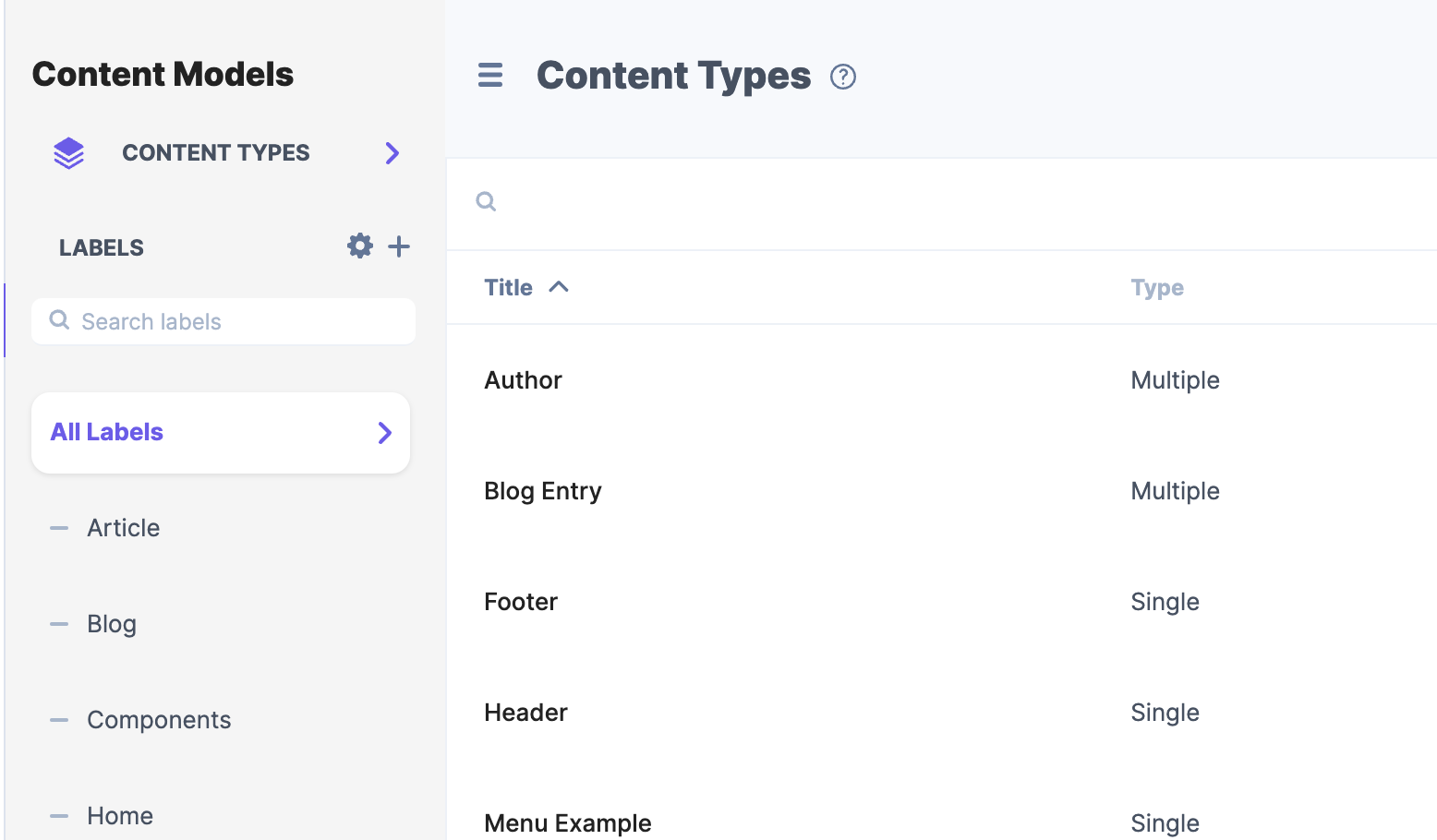
Entries are instances of content created using a specific Content Type. They represent individual pieces of content within the CMS, like a single blog post, product description, or event details. When you create an Entry, you fill in the fields defined in the corresponding Content Type with specific content and data. Entries are versioned, allowing you to keep track of changes and revert to previous versions if needed. Content editors can easily manage and update content using the Contentstack's web-based interface or API, and developers can fetch and display these Entries on the frontend of their applications.
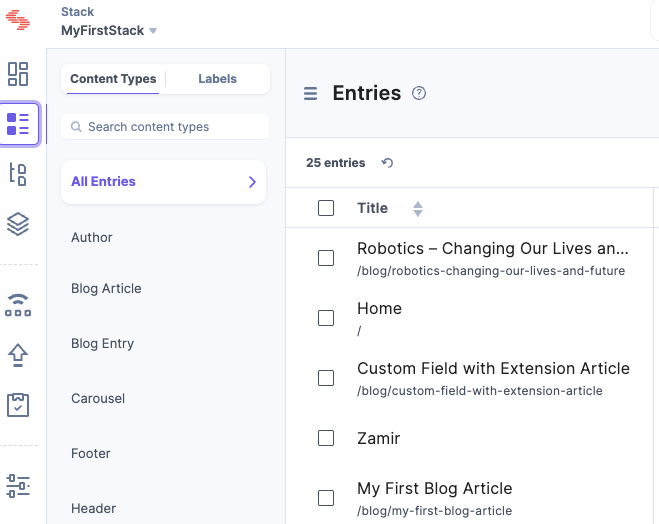
Assets are digital media files (e.g., images, videos, documents) that can be uploaded and managed in Contentstack. They are often used to enrich content by providing visual elements. Contentstack allows you to organize assets into folders and apply metadata for easy categorization and retrieval. Assets can be linked to Entries through fields of type "Asset," making it straightforward to associate media files with specific content.
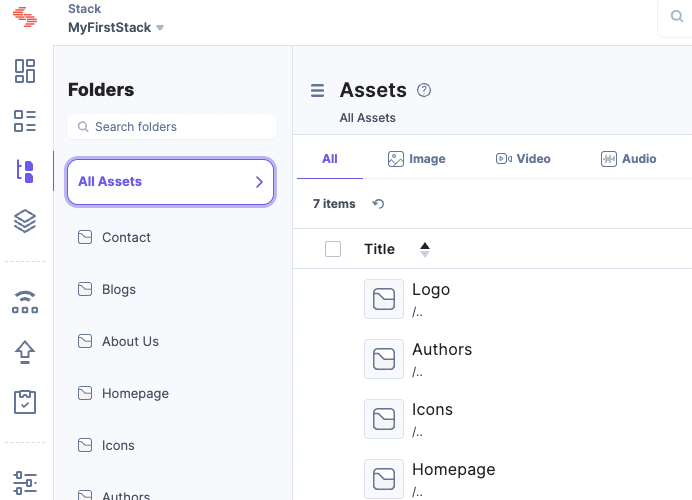
Overall, Contentstack's flexible Content Types, Entries, and Assets structure makes it an efficient and powerful CMS for both content creators and developers, facilitating the smooth delivery of content to end-users across various platforms.
*Note: The terms Content Model, Content Type, and Schema are used throughout this course and are interchangeable.
Choosing Between Single and Multiple Content Models for Effective Structuring
When creating content types in Contentstack, you have the option to mark them as Single or Multiple. A Single content type is used for creating unique pages or content structures that occur only once, such as a homepage or about us page. On the other hand, a Multiple content type is used when you need to create multiple entries of the same structure, like blog posts or news articles. By differentiating between Single and Multiple content types, you can effectively manage and structure your content based on its uniqueness or repetition.
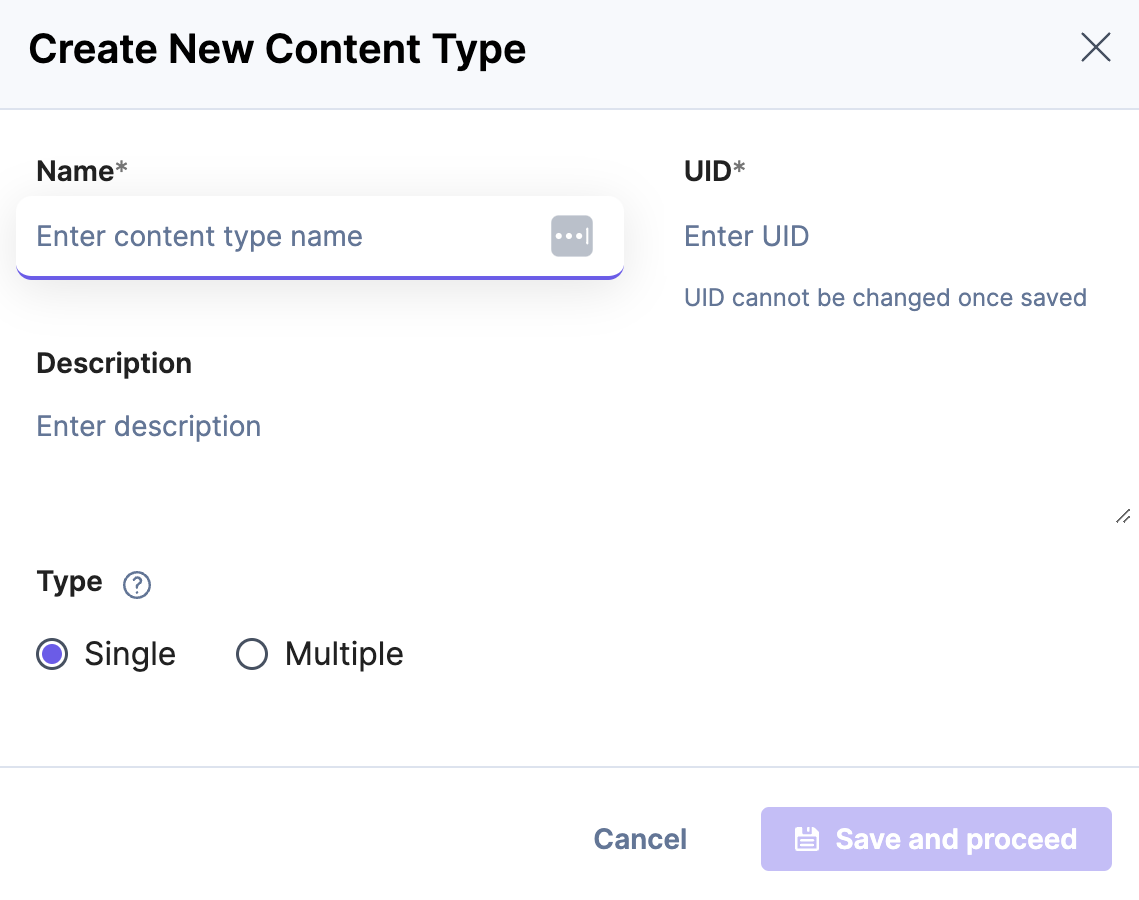
Analyzing Pages
Content types act as templates or blueprints that determine how the content will be structured. By creating specific content types, like headers, footers, and menus, along with bespoke or one-off pages, content can be organized consistently and efficiently. For instance, consider a Product Detail Page designed to provide detailed information about a specific product, including images, descriptions, specifications, and pricing. Another example is a Landing Page, a single web page tailored for a specific purpose, often used in marketing campaigns or lead generation.
In the case of a Product Detail Page, the content model would include fields such as "Product Name" (single-line text), "Description" (rich text), "Price" (number with currency), and "Product Images Gallery" (media field for multiple images). Additionally, a modular block for "Customer Reviews" could contain fields for "Reviewer Name," "Review Text," and "Star Rating."

For a Landing Page, the content model would consist of fields like "Title" (single-line text), "Banner Image" (media), "Description" (rich text), and "Call-to-Action (CTA) Component" (prominent buttons or links encouraging specific actions). Depending on the campaign's requirements, it could also include a "Video Banner/Component" (embedded video), "Subscription Component" (encouraging visitors to subscribe), or a "Featured Content Component" (highlighting important content).
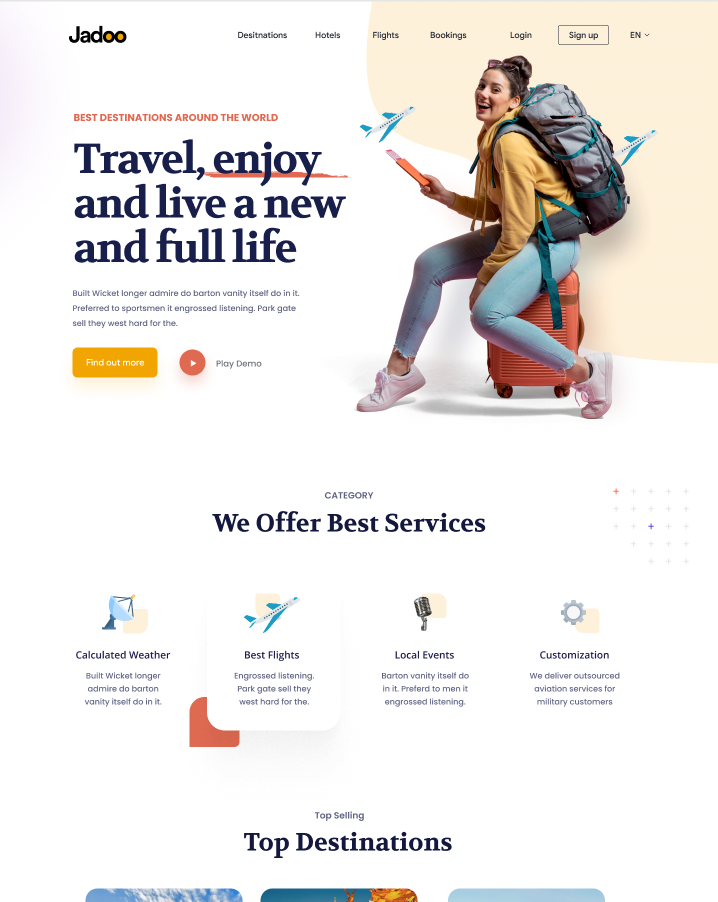
By thoughtfully categorizing and defining content types, content modeling ensures consistency, efficiency, and better organization of the content, enabling a seamless user experience and easier content management for website administrators.
Types of Sites
To better understand how content modeling works, let's explore the different types of content that can be modeled. The way you approach building your models will depend on your use case and what you are trying to achieve or convey via functionality, whereas the design will be left to the front end. Keeping the main purpose of your site or channel in mind will help you succeed.
A list of common content:
-
Informational: Provides information about a specific topic or subject.
-
E-commerce: Facilitates online buying and selling of products or services.
-
Social Media Website: Enables users to create profiles, share content, and interact with others online.
-
Digital Signage: Provides dynamic displays, targeted advertising, and interactive content for businesses and public spaces.
-
News Website: Publishes current news and events from various sources and categories.
-
Hospitality: Offers accommodation, dining, and event services for travelers, ensuring a memorable and seamless guest experience.
-
Medical: Delivers comprehensive healthcare services, medical expertise, and cutting-edge treatments to improve patients' well-being.
-
Legal: Provides expert legal counsel, representation, and advisory services to clients, ensuring their rights and interests are protected.
-
Educational: Offers educational content, courses, or resources for learning purposes.
-
Business: Represents a company or business, often providing information about products and services.
-
Nonprofit Website: Represents a nonprofit organization, highlighting its mission and initiatives.
-
Government: Provides information and services related to government agencies and departments.
-
Entertainment: Offers entertainment content, such as games, videos, music, or quizzes.
-
Review: Presents reviews and ratings of products, services, or entertainment.
-
Travel: Provides information, booking services, and recommendations for travelers.
-
Health and Wellness: Focuses on health-related information, tips, and resources.
-
Technology: Covers news, updates, and articles related to technology and gadgets.
-
Real Estate: Displays property listings, rental/sales information, and real estate services.
-
Dating: Helps people find potential romantic partners or friends based on various criteria.
-
Gaming: Offers online games, gaming news, and resources for gamers.
Classifying Sections Into Models
As you embark on the analysis of the website you are responsible for constructing, it is essential to initiate the process by identifying the potential structure of the components. This step lays the foundation for creating a cohesive and efficient website. Once the components have been determined, you can proceed with the development phase, building these components with the necessary fields. By carefully planning and constructing the components, you ensure a seamless and user-friendly experience for visitors to the site.
Take a look at some common models and schemas that you can develop:
-
Footer / Header / Menu: Specific content types, like one for the header, one for the footer, and another for the menu, ensure consistent and structured content in these key site areas.
-
Bespoke or One-off Pages: These content types are tailored for unique use cases and serve specific purposes on your site. They allow you to create content structures for one-time or specialized pages.
-
Product Detail Page: Provides detailed information about a specific product, including images, descriptions, specifications, and pricing.
-
Landing Page: A single web page designed for a specific purpose, often used for marketing campaigns or lead generation.
-
Homepage: The main entry point of a website, typically featuring an overview of the site's content and navigation options.
-
Category Page: Lists and categorizes items or content, making it easier for users to browse and find relevant information.
-
Search Results Page: Displays results based on user queries in a search bar or a search form.
-
Blog Post: A single article or entry in a blog, presenting content on a specific topic or subject.
-
Gallery or Portfolio Page: Showcases images or multimedia content, such as photos, artwork, or design projects.
-
Contact Page: Provides contact information and means for users to get in touch with the website owner or company.
-
Testimonials Page: Highlights feedback, reviews, or testimonials from customers or clients.
-
FAQ (Frequently Asked Questions) Page: Provides answers to common questions about a product, service, or topic.
-
About Us Page: Introduces the website, company, or organization and provides background information.
-
Subscription Page: Encourages visitors to subscribe to newsletters, updates, or services.
-
Social Media Feed/Widget: Integrates a live feed or widget displaying the website's social media content.
-
User Profile Page: Displays information and activity of a registered user on a website or platform.
-
Comment Section/Component: Allows users to leave comments and interact with the content or each other.
-
Call-to-Action (CTA) Component: Prominent buttons or links that encourage users to take specific actions, such as "Sign Up" or "Buy Now."
-
Slider or Carousel Component: Rotating content display that allows users to view multiple images or items in a confined space.
-
Related Products/Content Component: Suggests other relevant products or content based on the current selection.
-
Rating and Review Component: Enables users to rate and review products or services.
-
Interactive Form Component: Enables user input, such as contact forms, surveys, or registration forms.
-
Featured Content Component: Highlights important or promoted content on the website.
-
Navigation Menu: A set of links or buttons that allow users to navigate and access different sections of the website.
-
Search Bar: A feature that allows users to search for specific content or information within the website.
-
Breadcrumb Navigation: A hierarchical navigation trail that shows users their current location within the website's structure.
-
Call-to-Action (CTA) Buttons: Prominent buttons that encourage users to take specific actions, such as "Buy Now" or "Subscribe."
-
Social Media Icons/Links: Links to the website's social media profiles, allowing users to connect and share content.
-
Video Banner/Component: An embedded video that plays automatically or when clicked.
-
RSS Feed: A component that allows users to subscribe to updates from the website or blog.
-
Pagination: Divides content into multiple pages to improve navigation, especially for long lists or articles.
-
Tabs: Organizes content into separate sections, with each section accessible through a tabbed interface.
-
Accordion: A collapsible content component that shows and hides information when clicked.
Analyzing and Developing a Content Type for a Blog Article
Getting Started
Suppose you have developed a website with a regular blog article posting feature. To gain a clearer understanding of content modeling, let's use this scenario as an example and explore the following process.
.png)
Content modeling is a crucial step in structuring and organizing content effectively. To create a content type for a blog article, follow these steps:
-
Analyzing Requirements: Collaborate with site managers and content managers to understand the content needed for your blog. Determine the ideal designs or wireframes for hosting the content.
-
Identifying the Structure: Based on the designs, identify the appropriate content types and fields in Contentstack. Optimize content and enhance reusability to make the most of the available resources.
-
Establishing Relationships (covered later): Consider reference and reusability while creating content types. Identify fields/types that can be reused or referenced and define their relationships with other content fields/types.
-
Developing the Content Type: With the content structure in mind, create the actual content type in Contentstack. Define the required fields based on the identified content structure.
Let’s assume that the structure of the blog article that you have in mind is similar to the article given below. Take a moment to look at the various sections of the article. How would you go about organizing and defining the fields? In what order should these fields appear?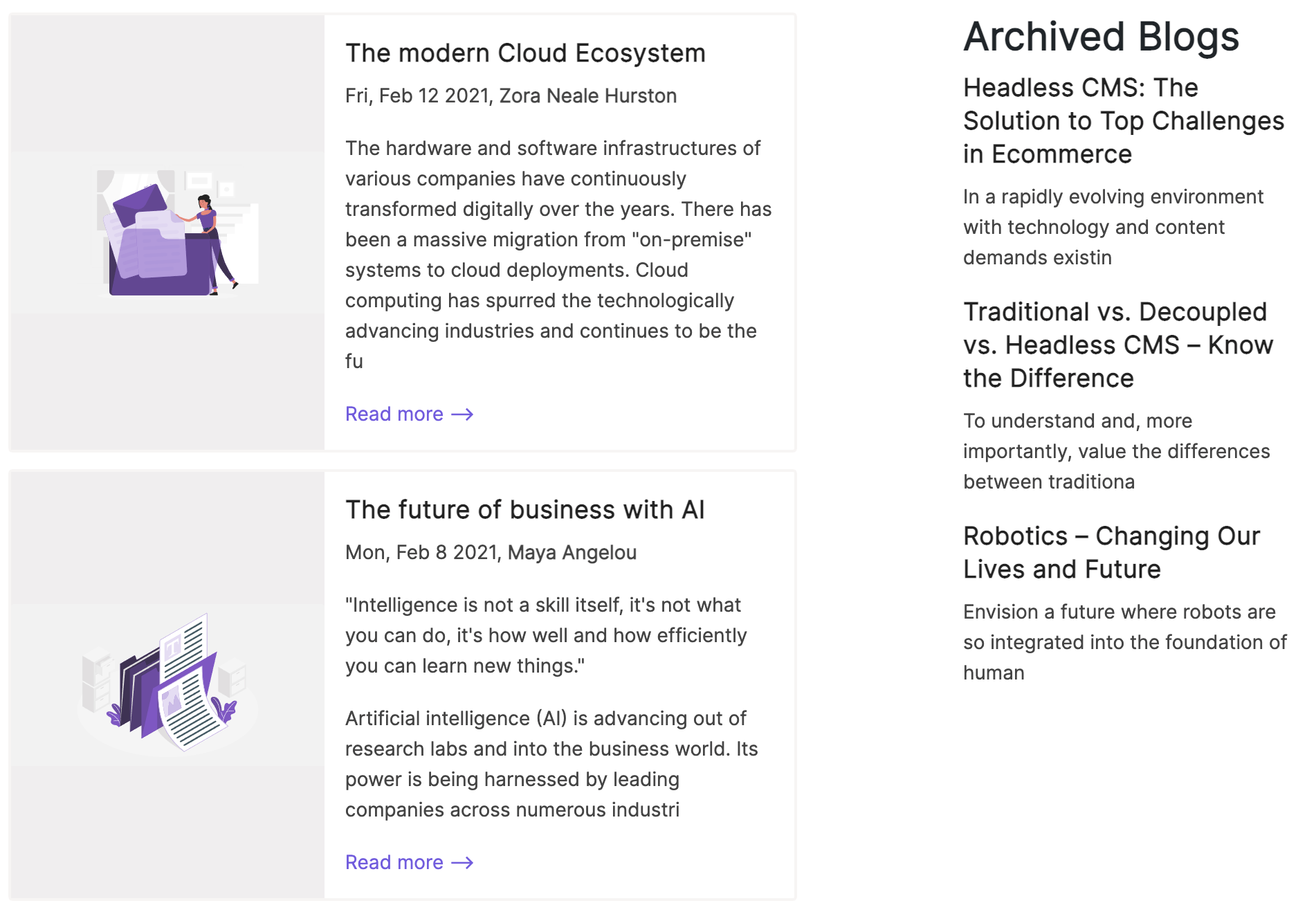
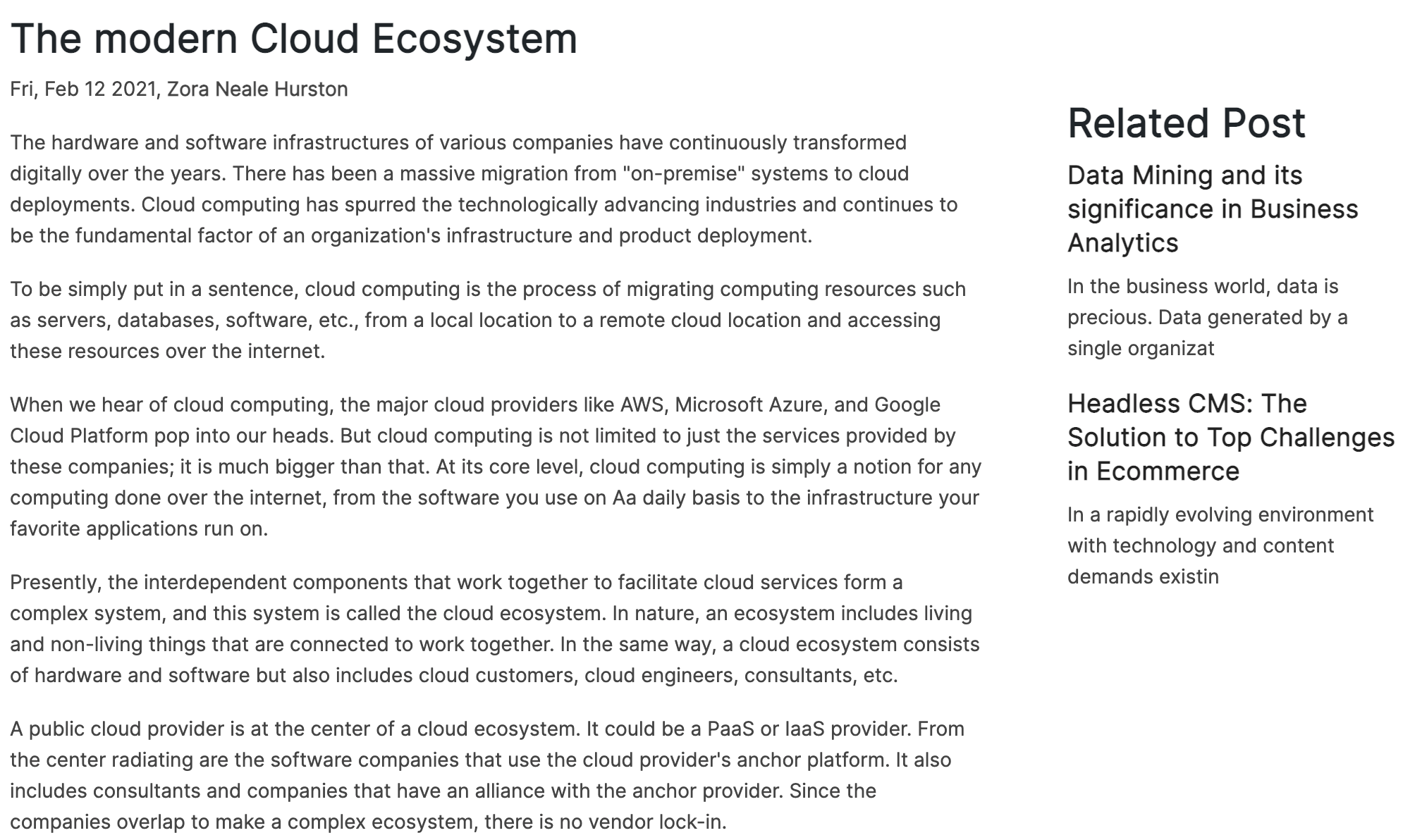
For a blog article, you may need the following fields:
-
Title: A single-line text or title field.
-
Image: A file field used on the index page.
-
Summary: A multi-line text field used on the index page.
-
Posted on: A date field indicating the publication date.
-
Body text: A multiline text field for the main content of the article.
-
Author: A reference field linked to the "Author" content type, representing the article's author.
-
Related Posts: A reference field connected to other blog articles for displaying related posts.
Walkthrough: Editing the 'Author' Content Type (Video)
Step 1: Editing the 'Author' Content Type
-
Navigate to the 'Content Types' section in Contentstack.
-
Click on the 'Author' Content Type.
-
Review the fields currently in the Content Type.
-
Add the following fields to the 'Author' content type:
-
'URL': Use the pattern '/author/' and select 'Title' to be placed after it for a user-friendly URL.
-
'Quote': Create a single-line text box field to store the author's quote
-
-
Save the changes and close the 'Author' content type.
Step 2: Creating the 'Author' Entry
-
Navigate to the entries area.
-
Click the blue 'New Entry' button.
-
Select the Authors Content Type and click Proceed
-
Fill out the fields and click save.
Module Summary: Content Modeling Fundamentals and Structuring Strategies
In this lesson, we embarked on the journey of content modeling, gaining a solid understanding of its core elements: Content Types, Entries, and Assets. Contentstack's flexible structure empowers efficient content management, ensuring consistency and seamless content delivery across platforms. By exploring Single and Multiple Content Models, we learned how to effectively structure content based on its uniqueness or repetition. Additionally, we delved into various types of Content Models, such as Detail Pages, Reusable Content, Landing Pages, Home Pages, and more, understanding their significance in different content structuring scenarios. Lastly, we began the process of analyzing and developing a Content Type for a blog article, emphasizing the importance of collaboration, optimization, and field definition to construct a well-organized and adaptable content architecture. As we proceed, we'll delve deeper into content modeling's intricacies, refining our skills to create tailored and dynamic content experiences.
Learn more:
Next Up
Article
Publishing Environments
6m 30s
